Planeswalker's Guide to Murders at Karlov Manor
Murders at Karlov Manor is set on the plane of Ravnica, but unlike previous sets, the focus isn't on the ten guilds. Rather, the set revolves around murder mysteries that are taking place on Ravnica. Follow along with detectives as they unravel mysteries, solve cases, and discover the secrets behind seemingly inexplicable events. Detectives may vary in background and motivation, but in the end, they all share the same goal: to cut through to the heart of a mystery and discover the one incontrovertible truth.
The events of the set take place roughly a year after the events of March of the Machine. Though Ravnica was ultimately able to fend off the Phyrexian invasion, it didn't come without costs. This guide offers a deeper look into the detective agencies of Ravnica, as well as the events and societal upheavals that gave rise to them.
If you love the lore of Magic and Murders at Karlov Manor, make sure to check out the full story, and you can also investigate preordering products now from your local game store, online retailers like Amazon, and elsewhere Magic: The Gathering is sold.
Previously on Ravnica: The Phyrexian Invasion
Guided by a Phyrexian Vraska, the Invasion Tree pierced into Ravnica's undercity and heaved entire sections of the city up, exposing the city-plane's moldering underbelly to open air for the first time in centuries and opening a pathway for the newly Phyrexianized Golgari Swarm to invade the rest of the city. The other guilds, once they realized what was happening, quickly rallied and fought back—most of them, anyways. While some of the Izzet and Simic fought on the side of the defenders, other, intrigued by the perceived technological and biological opportunities New Phyrexia had to offer, were drawn to the side of the invaders—only to realize their mistake too late.
Now, a year after the invasion, the guilds are still struggling to find a new equilibrium. Some find themselves stretched thin as their depopulated ranks attempt to address the demands of the populace. Others have chosen instead to turn inward, electing to focus on sorting out their own internal issues and all but abandoning their original purposes. Still, others have taken advantage of the ongoing confusion to advance their own agendas. Further complicating an already precarious situation, relationships between the guilds have fractured, leading to disagreements and struggles that test the fragile state of the plane.
The State of the Guilds
The ten guilds that are the foundation of power on Ravnica have existed for centuries. Each has its own identity and civic function, its own diverse collection of races and creatures, and its own distinct subculture. They're bound by a magical contract known as the Guildpact, which ensures that the guilds play specific roles within the infrastructure of Ravnica, allowing the city to grow and expand.
The current embodiment of the Guildpact is Niv-Mizzet, who took over as the Living Guildpact during the War of the Spark.
Azorius Senate
In the aftermath of the invasion, the Azorius found itself overwhelmed. Existing laws didn't adequately cover the numerous and various acts committed during and because of an interplanar invasion, and the majority of Azorius time and energy is mired in disentangling and updating the extensive legal code by which Ravnica abides. With all this focus on the restructuring of the law, only the minimum of resources has been devoted to other duties, and courts quickly became clogged with a backlog of pending cases.
To clear the dockets, the Azorius have set a policy of prioritizing clear-cut cases and straightforward arrests. Complicated crimes that involve more than a moderate investment of time and resources are deprioritized or put permanently on hold, awaiting the indeterminate future time when the Azorius has freed up enough resources to address them. As frustrations mount, they've taken to outsourcing these cases to the Ravnican Agency of Magicological Investigations, tasking Agency detectives with investigating crimes on their behalf.
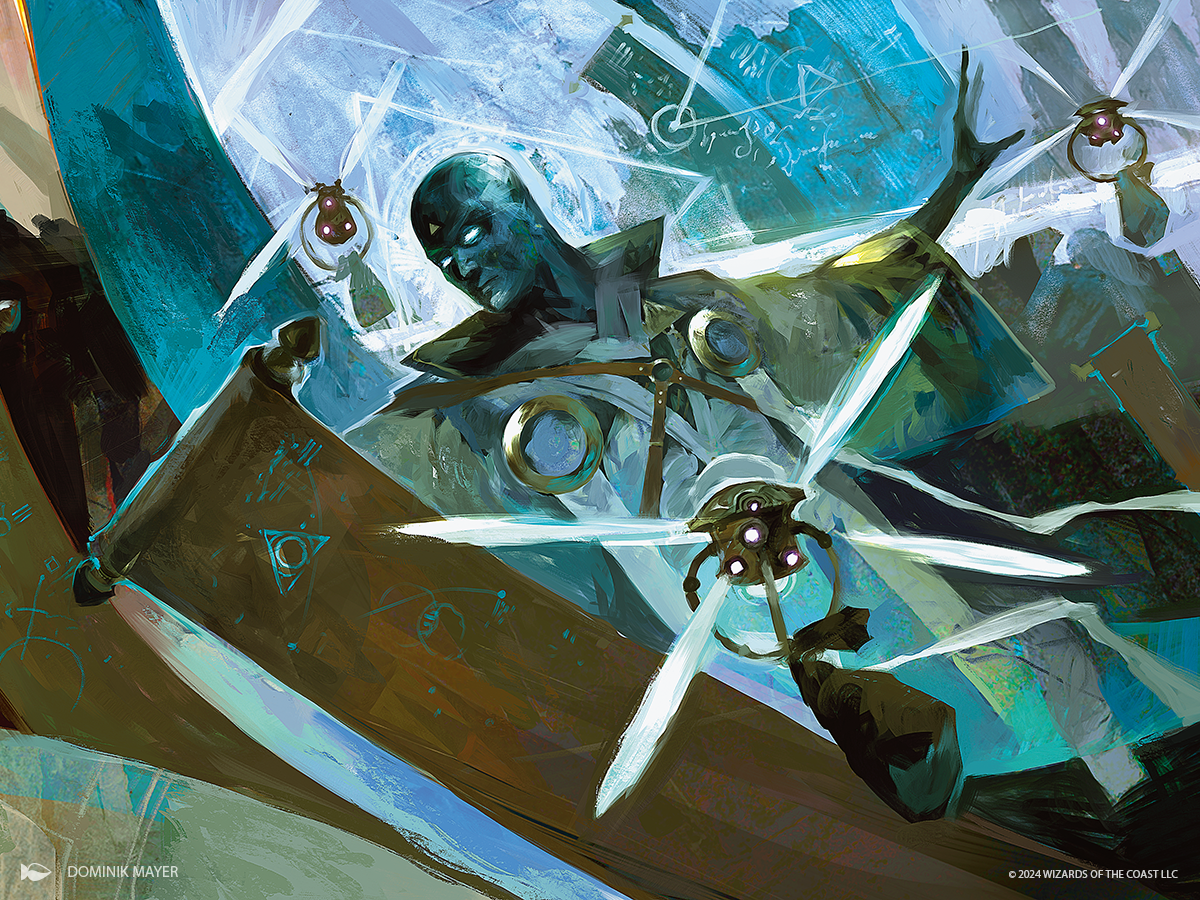
The acting guildmaster of the Azorius is Lavinia, who's held the post since the War of the Spark. Though initially reluctant to be guildmaster, she's grown to accept her responsibility and is unfailingly diligent in executing her duties.
Orzhov Syndicate
The Orzhov Syndicate is an elaborate hierarchy of syndics, priests, and oligarchs that exists for the sole purpose of funneling wealth to the top. Behind the twin facades of religious hierarchy and banking operations, Orzhov at its heart is an organized crime syndicate with its fingers in every business across the plane. At the top of the hierarchy are the oligarchs, the elite families who have belonged to the Orzhov for generations and possess unfathomable wealth.
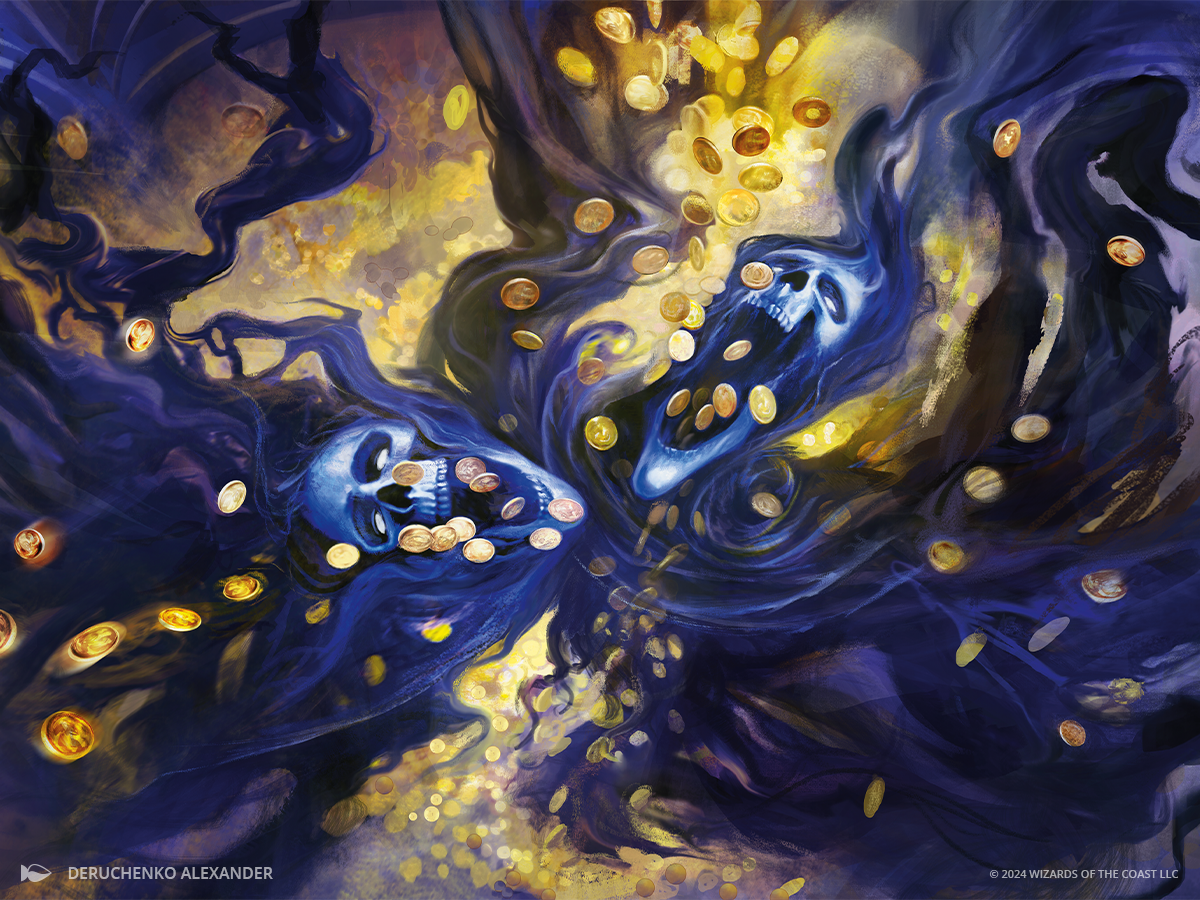
Where the rest of Ravnica saw tragedy, the Orzhov saw opportunity. The Orzhov fought just as hard as anyone else in Ravnica's defense during the invasion, but once the common enemy was defeated, they moved swiftly to take advantage of the ensuing chaos and uncertainty. They drafted up contracts and handed out loans—all at ruinously high rates.
Aware of how unfavorably these predatory practices would be viewed, the Orzhov also sought to soften public perception by commissioning several prominent works of rebuilding and restoration at their own expense. Some of these, like the curation and restoration of artifacts for the newly constructed Museum of Ravnica, were well received. Others, like the construction of Plaza Karlov, were seen as little more than a gross flaunting of wealth.
The head of the guild is Teysa Karlov, who wrested control of the guild from Kaya during the invasion. Teysa rarely concerns herself with the day-to-day running of the guild, though, preferring to enjoy her accumulated wealth in her newly built manor at One Karlov Place. Most guild functions continue to be handled by Tomik Vrona.
House Dimir
Never comfortable with how public they were forced to become during the War of the Spark, the Dimir had been making a concerted effort to erase their existence from the public mind again when the Phyrexians arrived on Ravnica. Under cover of the invasion, they staged the elimination of their entire leadership, complete with eyewitnesses and overwhelming physical evidence. With such a drastic blow to the guild, it seemed only natural that afterwards they were reduced to the bare minimum of surveillance and information-gathering activities as they limped along, seemingly without direction or guidance. Even among the Dimir, no one is entirely sure who or what is in charge, adding a convincingly genuine sheen of ambiguity to the ruse.
The Dimir continue to openly print and circulate Ravnica's most well-read news sheets, but secretly, they also operate many other, smaller news sheets around the city—each with a different, frequently contradictory perspective, which allows them to maintain a fiction of independence. This way, they can selectively curate what information the public has access to and continue to deflect public attention from their own activities. Many of the other guilds suspect that the Dimir are more active than they claim to be but are largely too preoccupied with their own affairs to devote much time or energy to substantiating rumors.
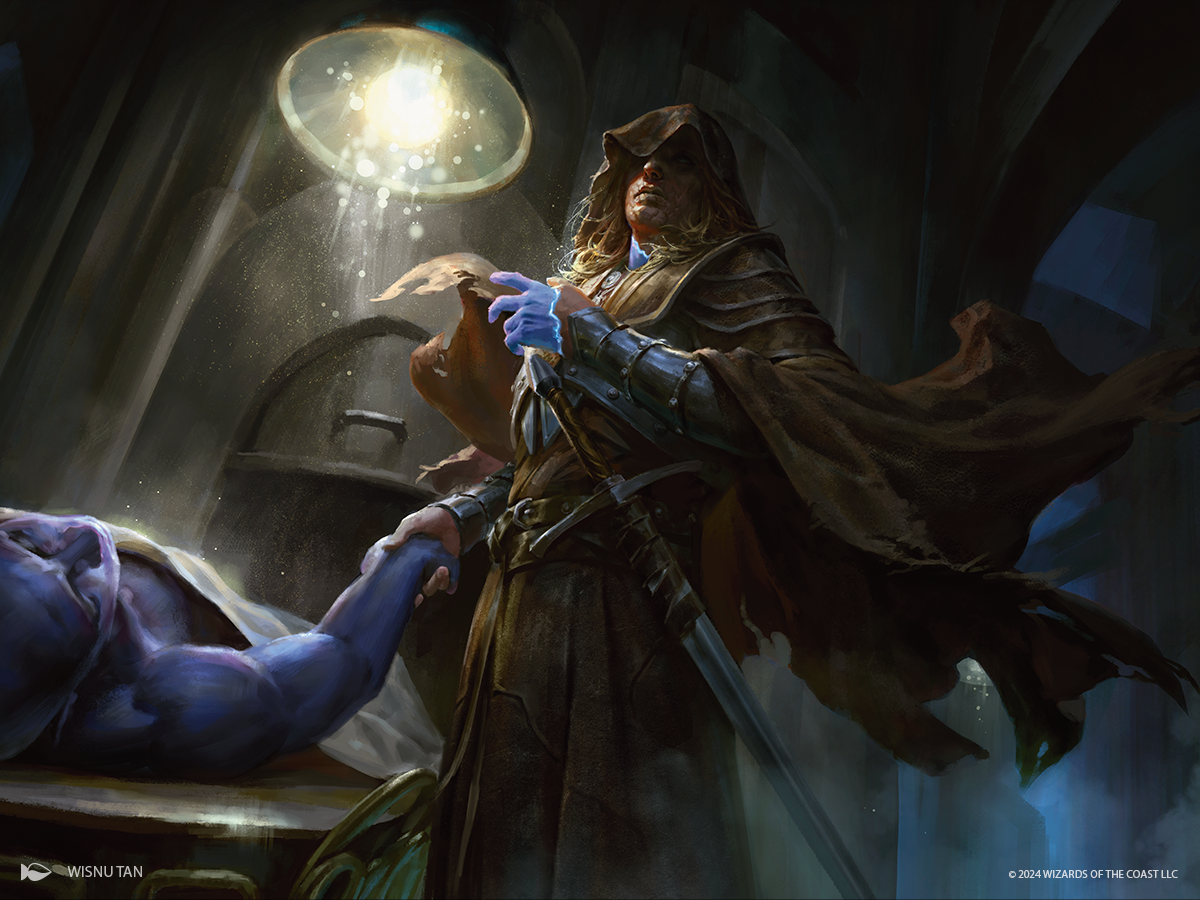
Unbeknownst to anyone, even his own guild members, Guildmaster Lazav has been assuming the faces and roles of low-rank Dimir agents and, from there, continues to draw the guild out of the public eye gradually, even as he rebuilds his secret networks. The only people who have contact with Lazav are his necrosages, and even then, they never interact with him directly, instead receiving instructions through dead drops and coded messages.
Izzet League
In an ironic twist, much of the rebuilding was spearheaded by the Izzet League, as they shelve their wild, destructive experiments in favor of reconstruction and public works projects—in theory, the core purpose of the guild, which in practice typically ended up being a secondary concern to their own pet projects. Though the Izzet, like the Simic and the Golgari, were initially denounced for dabbling in compleation, their unexpected dedication toward reconstruction has swayed the general populace to view them, if not favorably, in a neutral light.
Much of this is thanks to Guildmaster Ral Zarek, who currently enforces a strict limit on personal experiments. While this practical approach has been well received by the rest of Ravnica, it's caused much internal friction. Many chafe at these restrictions, and a significant number of members have defected as a result, refusing to bow down to what they see as high-handed constraints on their inventiveness. Many of these defectors have set up their own independent research labs and engineering firms, where they can continue to experiment as they like, even if it's on a smaller budget. As a result, there's been an unexpected boom in the creations of low-cost assistive devices, such as the investigative gear used by detectives. It's a niche that's proven to be nicely profitable.
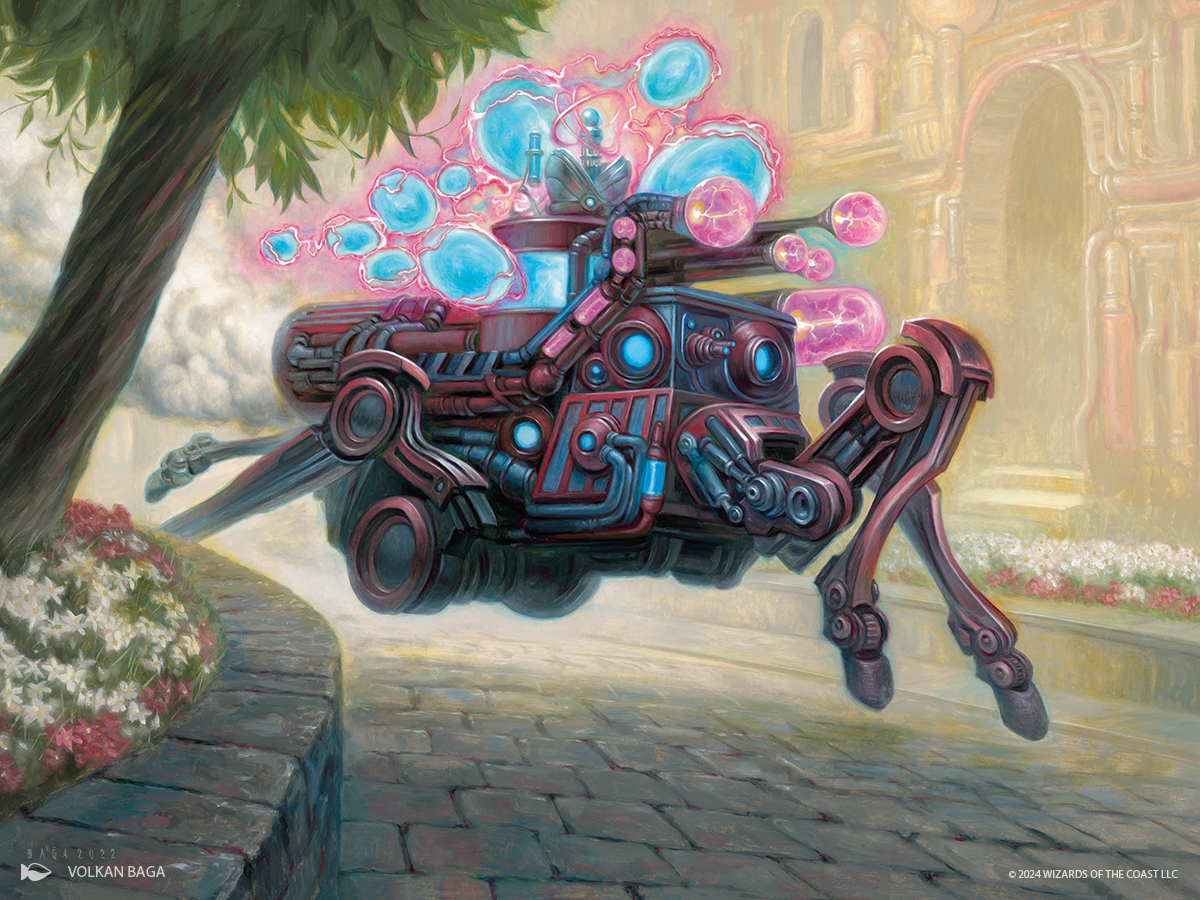
A significant portion of the funding for the rebuilding comes from the Orzhov Syndicate, which has uncharacteristically loaned the money to the Izzet on extremely favorable terms, thanks to the relationship between Ral and Tomik. Even so, rebuilding has been erratic, frequently beset with difficulties and hampered by continued hostility from other guilds.
Cult of Rakdos
As Ravnica's recovery progresses and the immediate need for survival and rebuilding gradually fades, Ravnicans have been seeking more and more opportunities to immerse themselves in distractions and relieve some of the grief of the tragedy—and the Cult of Rakdos has been more than happy to oblige. Nightclubs and circus tents spring up seemingly overnight, in addition to spur-of-the-moment parades and street revels. These freewheeling spectacles are liable to spring up whenever enough guild members are on hand to make one happen, regardless of where they are. It's not uncommon to see elaborate, raucous Rakdos parades promenading through a street still filled with ruined buildings and choked with debris. The number and scope of Rakdos's entertainments have grown so rowdy and chaotic that the Boros have been stepping in more and more, leading to increasing clashes between the two guilds.
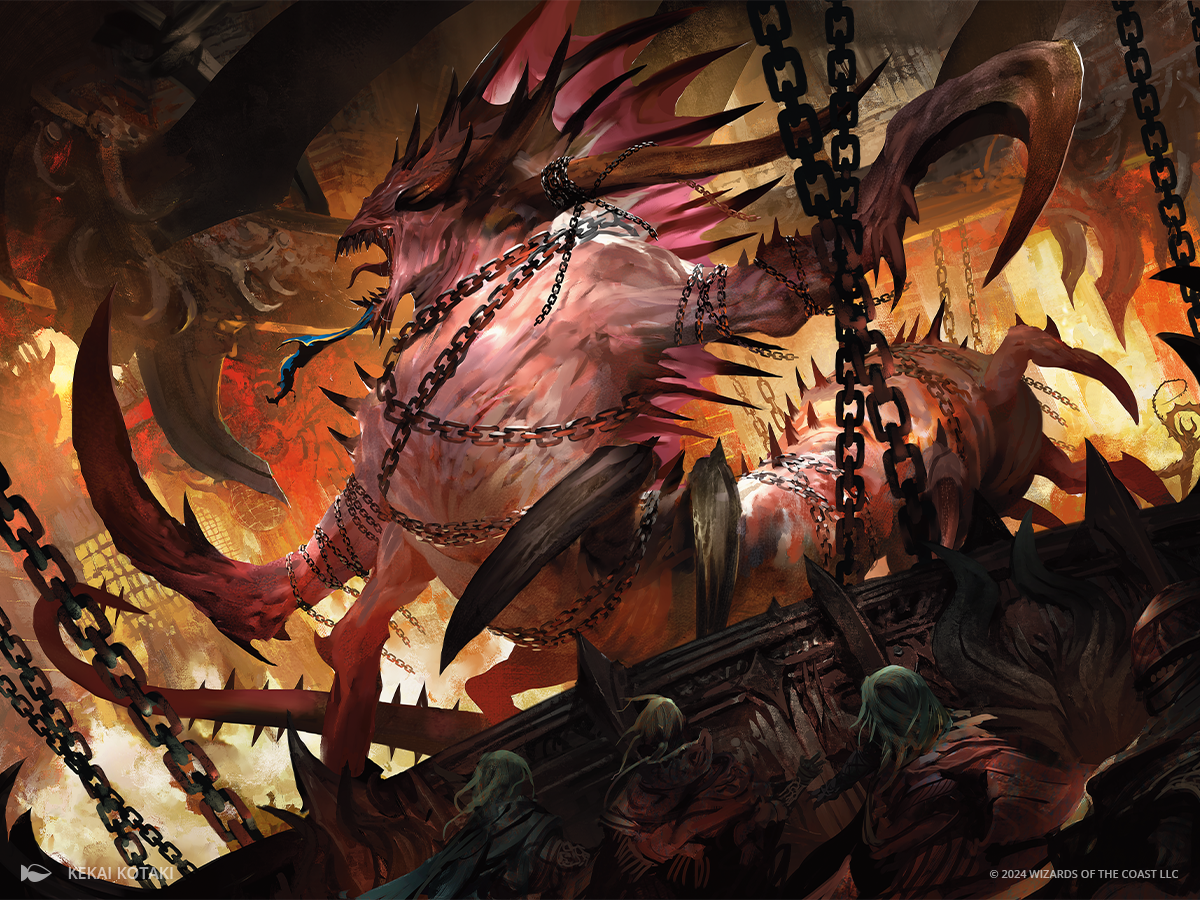
Though Rakdos is nominally guildmaster, he's largely uninterested in running his guild, preferring to spend most of his time in his lair while the top performers of his cult vie to outdo each other in the elaborateness and shock factor of their entertainments.
Golgari Swarm
As the guild that spearheaded the Phyrexian invasion on Ravnica, the Golgari Swarm continues to suffer the ongoing consequences. The Golgari have been unanimously denounced by the other guilds, its members shunned and reviled—those who survived or managed to escape compleation, anyways. Many of the surviving Golgari have defected in droves. Those few who remain fall in two categories: those who still believe in the guild and are determined to see it rehabilitated, and those who are so notorious that they have no other options.
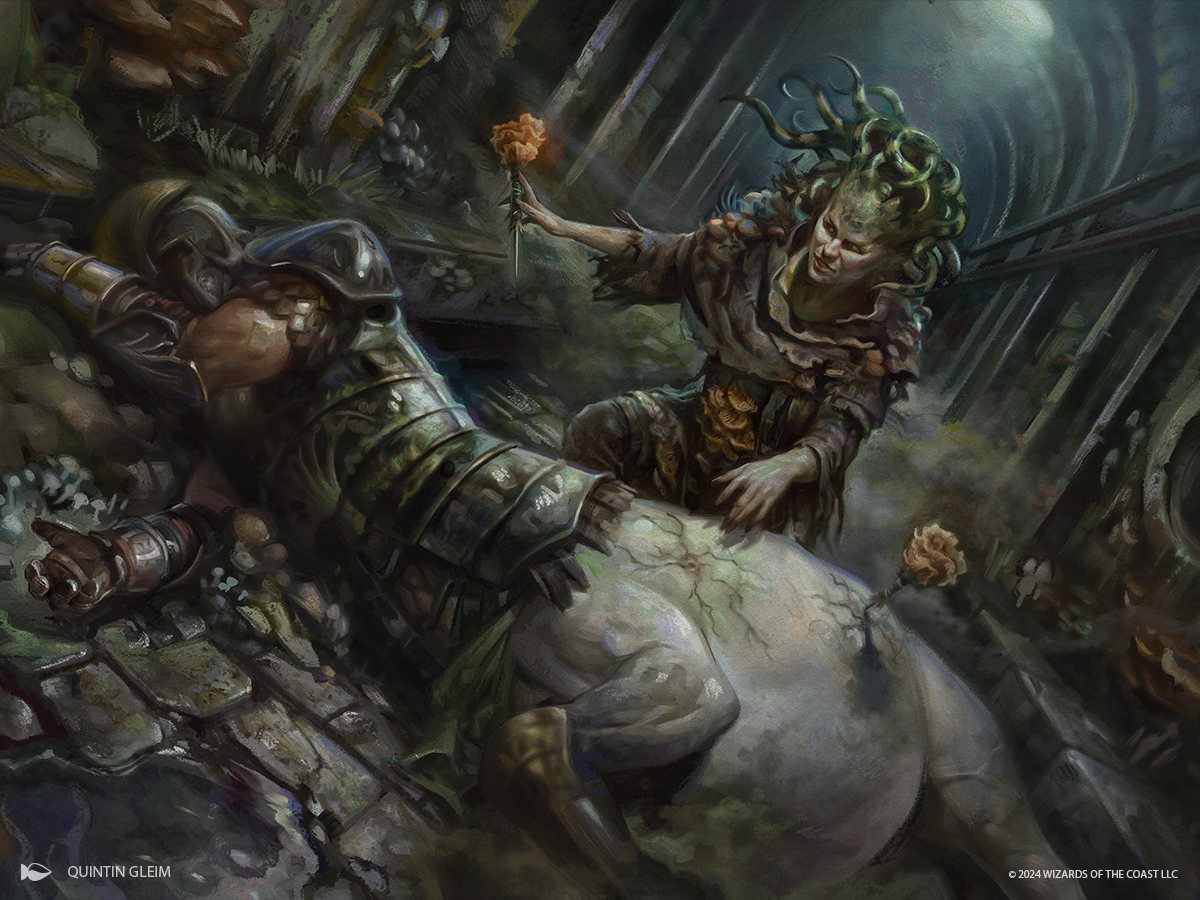
Currently, there is no acting head of the guild. The previous guildmaster, Vraska, disappeared after the invasion ended and hasn't been seen since. In her absence, the remaining leaders of the various Golgari factions, in a rare show of unity, resoundingly denounced her and stripped her of her title in the hope of distancing themselves from her acts. Each faction would like to claim the title for themselves, but none have been able to gather enough followers to gain a decisive victory and consolidate the guild once more.
Gruul Clans
The Gruul lost no time in occupying or claiming as much of the ruins left in the wake of the invasion as possible, emboldened in further pushing the boundaries of their territory. This territorial expansion occurred almost simultaneously across multiple zones of the Rubblebelt, leading many to suspect that the various Gruul clans were coordinating their efforts to take advantage of the weakened states of the Azorius and Boros. In reality, the clans were all acting independently; it was merely coincidence that they all chose to do so at roughly the same time. Efforts to rebuild Ravnica are being constantly and actively disrupted by the Gruul.
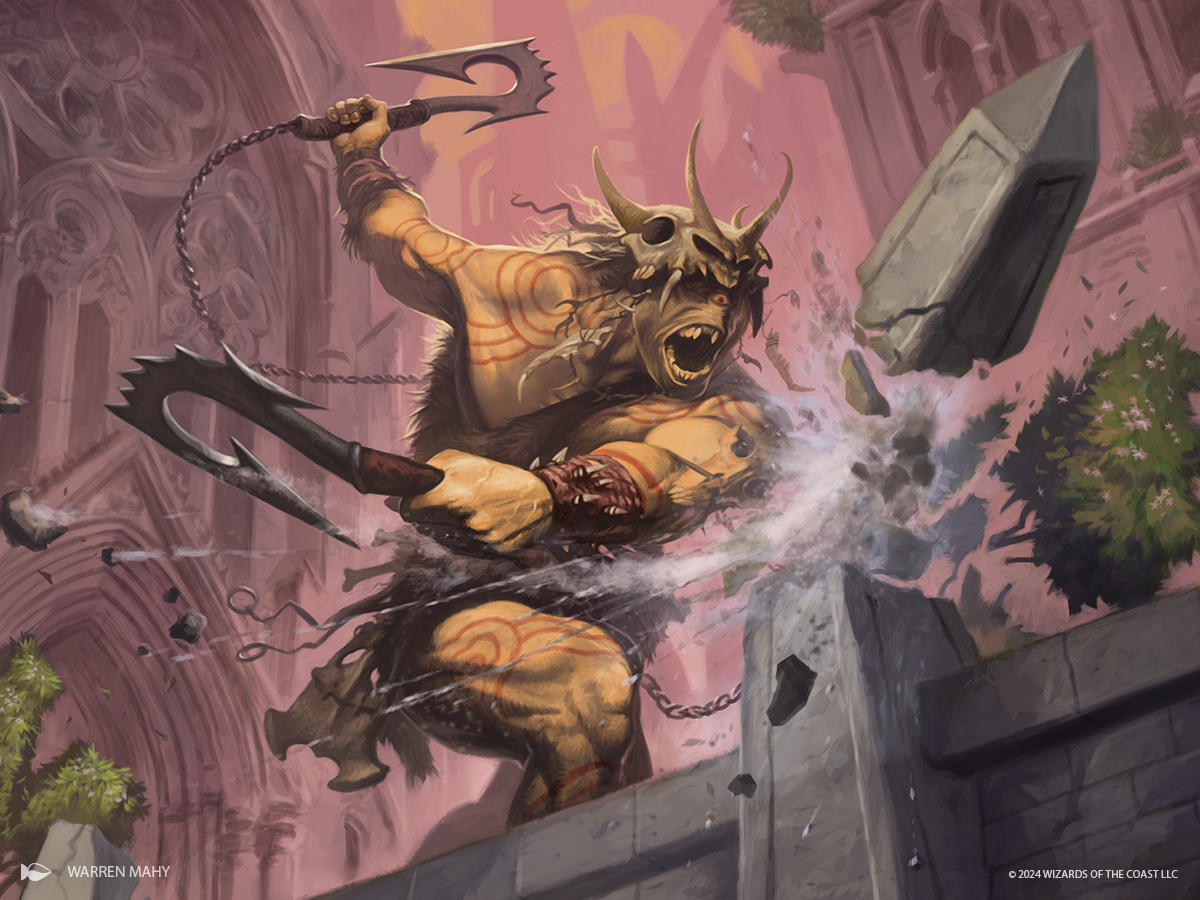
Because of this abrupt increase in territory, the Gruul now find themselves with more territory than the clans can comfortably defend. Violent clashes break out as the Gruul struggle to maintain their control, typically against Boros incursions.
Though the Gruul have no single leader, they've generally been following Borborygmos, leader of the Burning-Tree Clan, for a while now—even more so since the invasion, where his ferocious fighting earned him great respect and loyalty. The only real potential challenge to his power is the Zhur-Taa Clan, thanks to their leader, Nikya, who was instrumental in bottlenecking the Golgari Swarm from the surface of Ravnica with her constricting vine magic.
Boros Legion
Since the invasion, the Boros Legion has been suffering a crisis of faith, as many of its surviving members feel guilt and remorse for not being able to protect the plane as they felt they should have been able to. Guildmaster Aurelia took the losses particularly hard. Now, as if to compensate for what they view as their own failures, they've grown even more aggressive about cracking down on the disruptive activities of the guilds they've traditionally viewed as threats to Ravnica—namely, the Golgari, Simic, Rakdos, and Gruul.
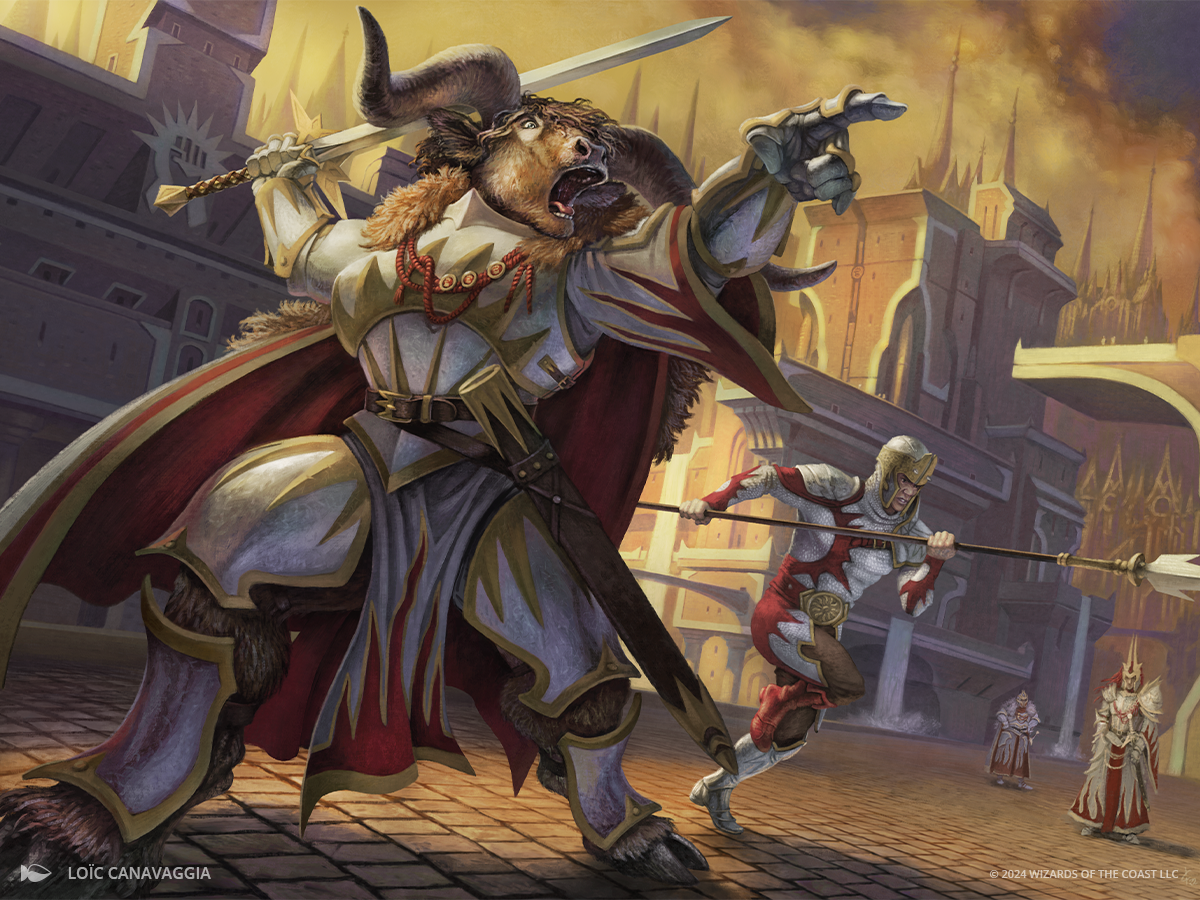
This resolve is complicated by the fact that the Boros's ranks are severely depleted. As frontline fighters against the Phyrexians, the Boros suffered heavy losses. To correct that imbalance, the Boros have been stepping up their recruitment efforts amongst the guildless, which has resulted in a large number of new, untrained recruits now patrolling the streets. In addition, Boros mage-priests have taken to training the Legion's soldiers in wielding battle magics previously reserved for higher-ranked members.
Selesnya Conclave
Immediately following the end of the invasion, the Selesnya Conclave closed in on itself, shutting itself off to outsiders. Throughout the rebuilding efforts, it refused any offers of aid or assistance from other guilds, obstinately self-sufficient. It also refused to help anyone outside the guild, focusing all its efforts on restoring itself first.

In recent months, however, the Conclave has started to open back up to the rest of Ravnica, though they remain much more reserved about guild affairs than before. The current status of the Conclave is a mystery to outsiders. Rumors abound of schisms within their ranks, a loss of connection with the Worldsoul—but no one outside the Conclave knows for sure. Trostani, the three dryads who together lead the Conclave, have closed themselves off inside a hidden room deep in the heart of Vitu-Ghazi, and no one outside the guild has seen them for months. She relies on a select group of guild members such as Tolsimir and Emmara Tandris to screen out anyone seeking an audience with her.
Simic Combine
Of all the defending guilds, the Simic were the ones who came closest to Phyrexia. A significant number of their members willingly underwent compleation to gain more insight into the mutagen—a well-intentioned move with disastrous results. During the invasion, the main factions had set aside their differences and worked together, but in the aftermath, Zegana attempted to wrest the position of Prime Speaker back, arguing that weak leadership was the main cause for the Simic's ill-advised decisions.
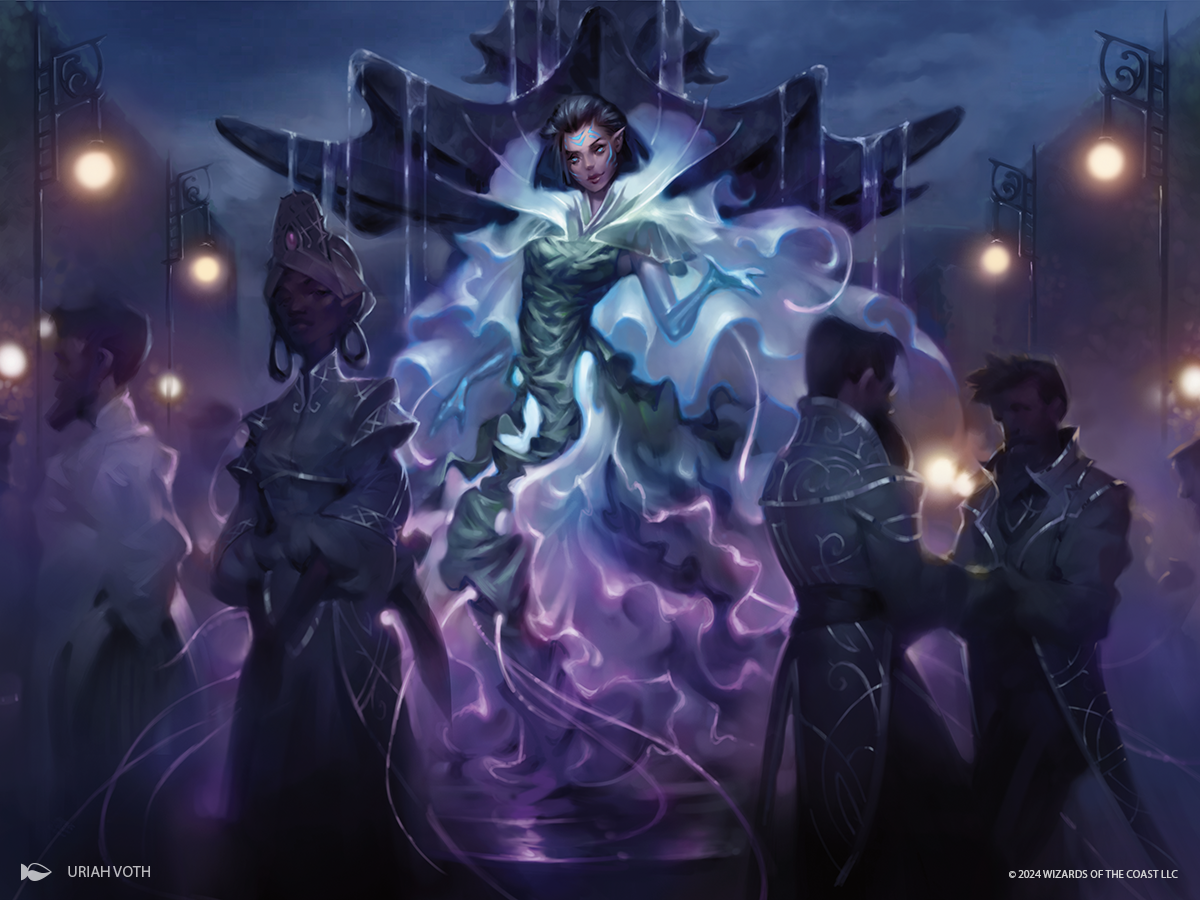
Vannifar, however, took the unorthodox move of seeking aid from the other guilds, a move that garnered her strong outside support. Backed by so much of Ravnica's leadership, she managed to hold on to her position—but internally, she continues to face constant challenges to her authority.
Many people were damaged or severely maimed by the aftereffects of partial compleation, and the Simic have been offering healing treatments to work themselves back into the good graces of the rest of Ravnican society. Ironically, their experiments into Phyrexian oil proved useful in these medical treatments. Many of their patients are reluctant and fearful to go to them, but in the end, they have no other option—not if they want to excise the last vestiges of Phyrexia from their bodies and regain some semblance of normality.
New Locations
The Museum of Ravnica
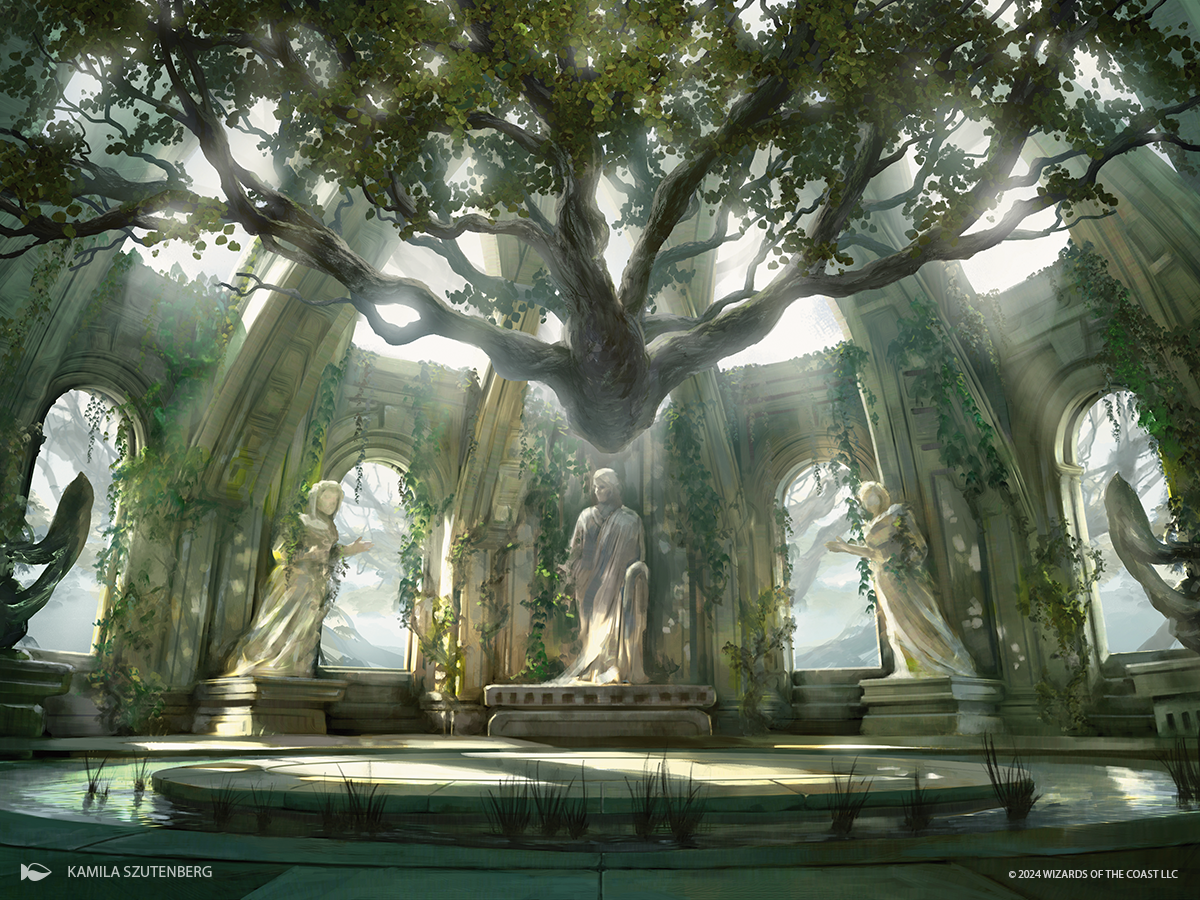
Housed within the dormant remains of Vitu-Ghazi, the Museum of Ravnica was established as a joint effort of the Orzhov and Selesnya guilds, the sole moment of cooperation of Selesnya with outsiders in the aftermath of the invasion. The museum is home to a collection of objects and art displays that celebrate Ravnica's past trials and triumphs. Many of Ravnica's most iconic moments and artifacts are memorialized here, including a replica of the original Guildpact treaty, the shattered remains of Gideon Jura's Blackblade, and lazotep remnants of Eternalized Oketra.
While the public areas of Vitu-Ghazi are open to all visitors, large sections of the tree's interior remain restricted to Conclave members only. Public museum and private guildhall spaces interweave but never intersect, except at a few secret entryways that are sealed off by wood-shaping magic and guarded by handpicked members of the sagittars, an order of elven archers that defends key guild locations. At the heart of Vitu-Ghazi is Trostani, the dryad guildmaster of the Selesnya Conclave, whose roots tangle with the living wood of Vitu-Ghazi so that the two seem inextricable.
Plaza Karlov
A newly established neighborhood of flagrant wealth and glamorous ostentation, Plaza Karlov is the hottest—and most expensive—place to live. Elegant, modern manors reach skyward over wide, paved avenues and sprawling grounds where Ravnica's wealthy elite make their homes. Warded iron gates ensure only those with permission may enter the private estates.
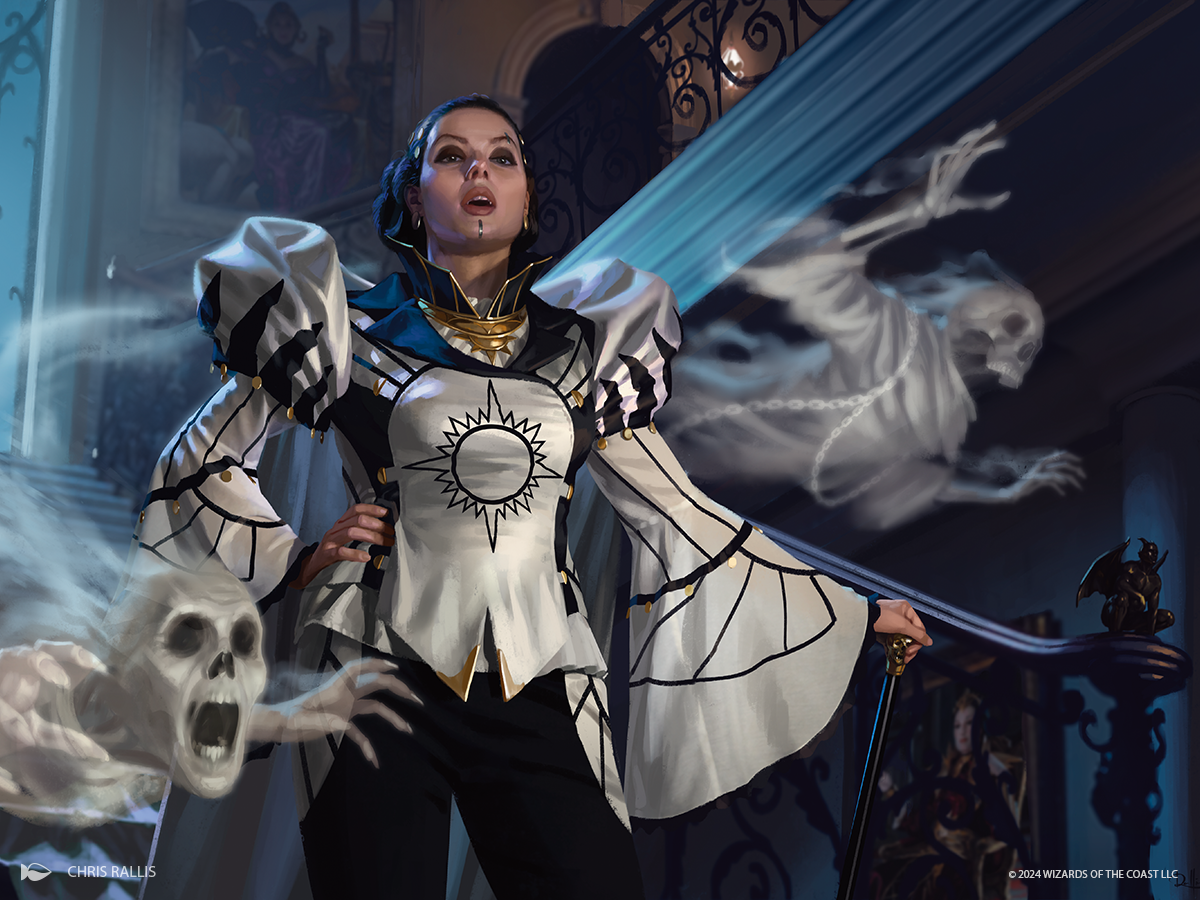
The prime address in Plaza Karlov is One Karlov Place, home to Teysa Karlov, head of the Orzhov Syndicate and the undisputed wealthiest individual on Ravnica by far. The manor is an unabashed monument to Teysa's wealth, every inch of it designed to inspire awe and establish Teysa's place at the top of Ravnica's social hierarchy. Intricate windowed facades, glass spires, and arched skybridges climb over a park-like expanse of meticulously maintained grounds. To reach the manor, visitors must drive up a long, meandering road, forcing them to admire the full extent of her domain before they even reach her door. Many businesses and other households located in Plaza Karlov exist solely to support Teysa Karlov's decadent lifestyle. Invitations to Teysa's exclusive, extravagant galas are considered sure signs of one's social standing and are highly sought after.
Hellbender Nightclub
Hellbender is the place to be to see and be seen after the sun goes down. Inside, patrons are treated to nightly spectacles of dance, music, and performances that blur the line between observer and participant. Dress code is strictly enforced, and raucousness enthusiastically encouraged. Rising stars among the Rakdos compete for a chance to perform on Hellbender's stages, main or otherwise.
Hellbender is in Plaza West, to the indignation of many of the plaza's longtime proprietors, who deplore what they consider to be tasteless and excessive hedonism.
The owner of the club is Judith, who also frequently appears as the main act of the night.
The Chamber of the Guildpact
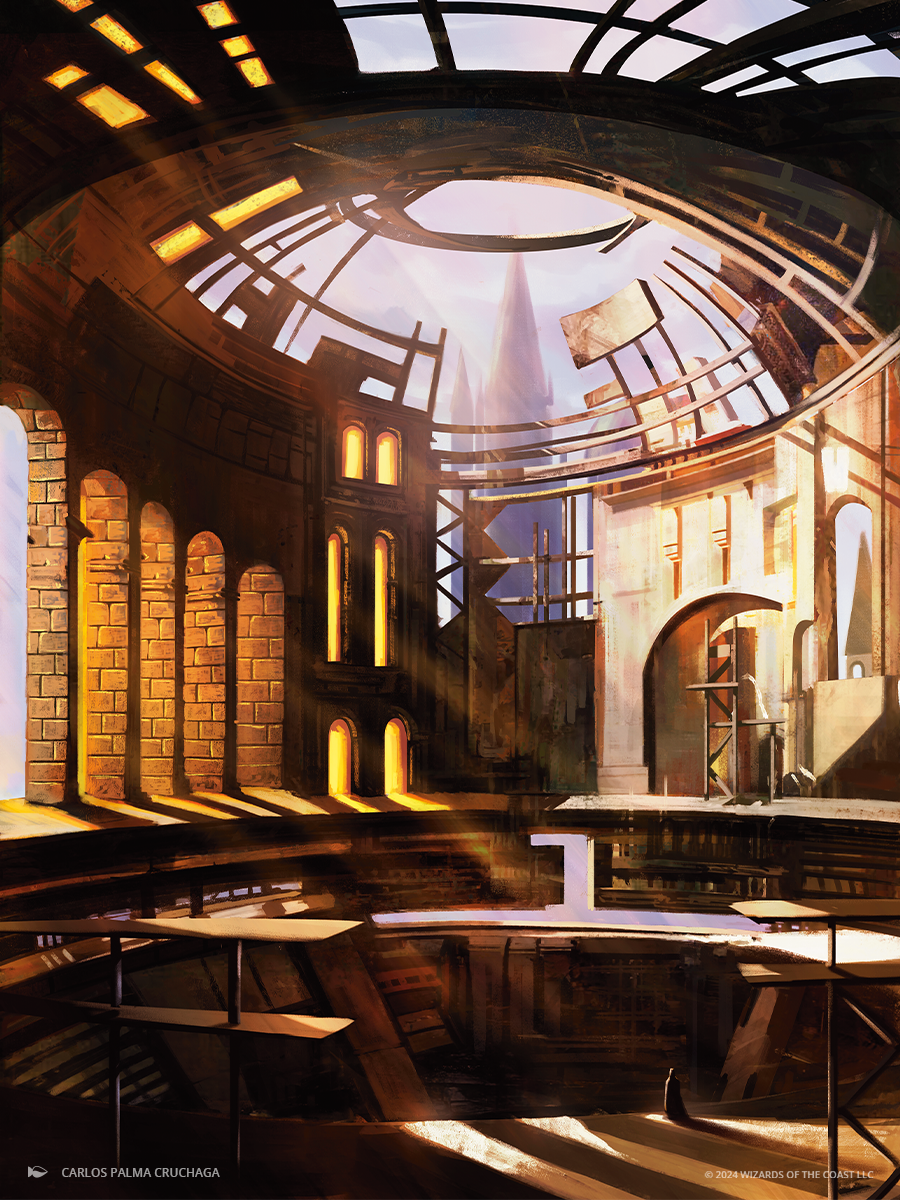
The Chamber of the Guildpact has been destroyed twice: once during the War of the Spark and again during the recent Phyrexian invasion. It is currently still being rebuilt from that second destruction, but a lack of funds and lukewarm guild support has delayed the process multiple times. Despite this, Niv-Mizzet refuses to relocate, insisting that guild dignitaries who seek an audience with him continue to do so in the rickety, drafty skeleton that is now the chamber.
The Risen Undercity
During the invasion, a large portion of the undercity was lifted above ground by the branches of the invasion tree, exposing subterranean layers to open air for the first time in centuries. The exposure of underground flora and fauna to sunlight has led to the evolution of new species or plant subspecies as they adapt to this new light—there are varieties of plants never before seen and still being discovered.
Rise of the Guildless and Frustration with the Guilds
The current state of Ravnican society can be summed up in one word: fragile. Shattered by the Phyrexian invasion, recovery has been slow and erratic, hampered by fragmented guild relations and lack of confidence from the populace. The demands being placed on them have taxed their depleted numbers, forcing them to cut back on many of their usual civic duties or responsibilities. With a breakdown of Ravnica's de facto governing structure, civilians were frequently forced to fend for themselves.
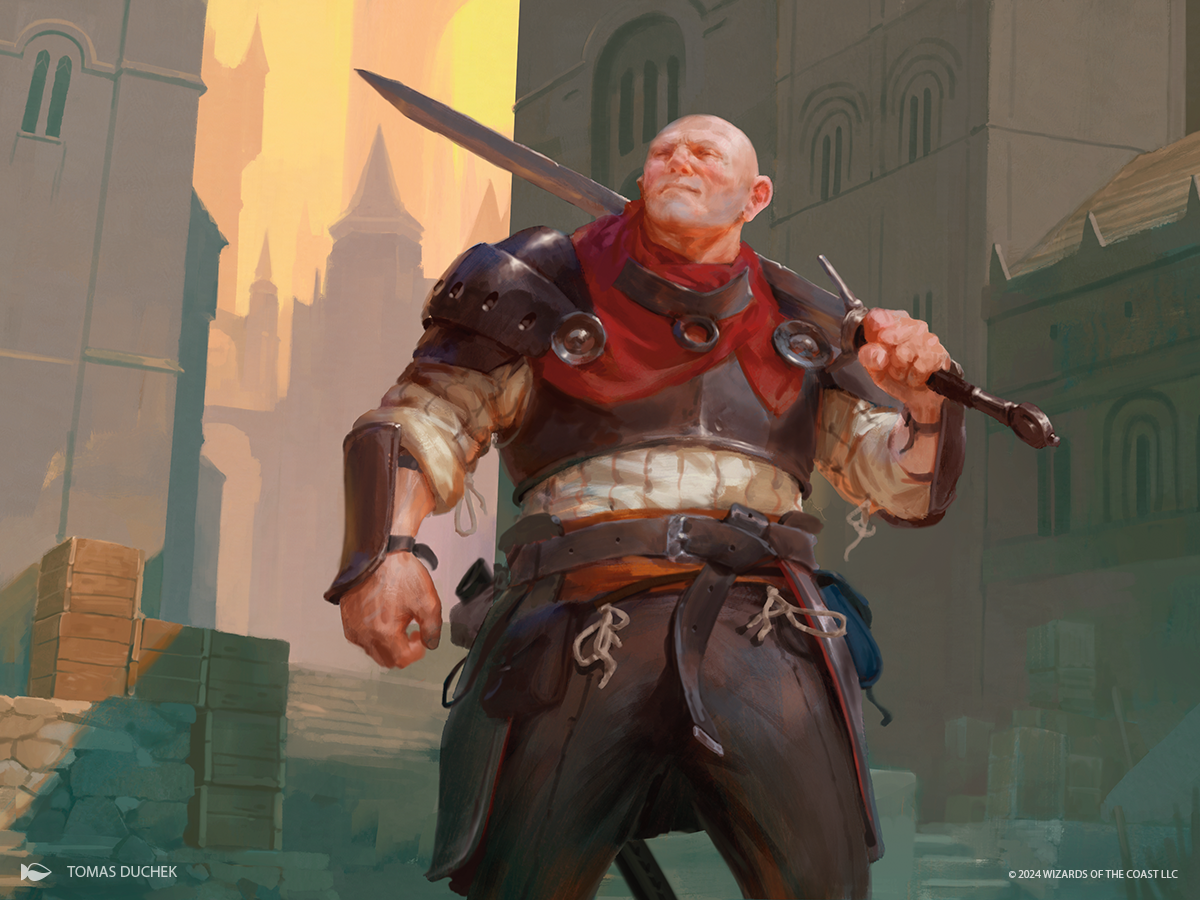
Rather than wait for the guilds to sort themselves out, many began to deliver on services by themselves, even for areas that had traditionally belonged to guilds, such as crime patrols or infrastructure repair. One such service was that of investigation and detective agencies.
Unguilded Detectives
For most of Ravnica's history, the detective profession was considered insignificant. The Boros and Azorius guilds claimed jurisdiction of all criminal investigations, and guild-related affairs were handled internally. Independent detective agencies primarily dealt with small civilian matters, and agencies were modest in size.
However, as the guilds struggled to perform their regular duties, independent agencies began to gain more prominence. At first, the guilds refused to work with outside detectives, viewing guildless investigators as interlopers. The Azorius and Boros strenuously objected to unguilded detectives taking over what had traditionally been their areas of influence. As the guilds' difficulties continued, they were forced to grudgingly accept assistance.
Eventually, the guilds and detective agencies reached equilibrium. By unspoken understanding, the guilds avoid interfering with detectives' investigations if any true crime is promptly turned over to the appropriate guild. In return, detectives focus solely on investigation and unraveling mysteries—they're strictly prohibited from making arrests, imprisoning culprits, passing sentences, or otherwise enacting justice.
To facilitate their investigations, detectives are also often granted some level of access into guild territory that non-guild members typically don't get. In fact, many guilds will often employ detectives as well to investigate issues that they don't have the resources or capacity to deal with themselves. Most detectives do their best to keep relationships with the guilds amicable, but friction often arises when these informal boundaries run up against the harsh realities of an investigation.
In no time at all, the number of detective agencies on Ravnica had increased tenfold. The most prominent of these soon came to rival even the guilds in size: the Ravnican Agency of Magicological Investigations.
The Ravnican Agency of Magicological Investigations
History of the R.A.M.I.
The R.A.M.I. started out as a small, dedicated cult of followers of Ezrim, a guildless archon who pursues twin ideals of clarity and truth.
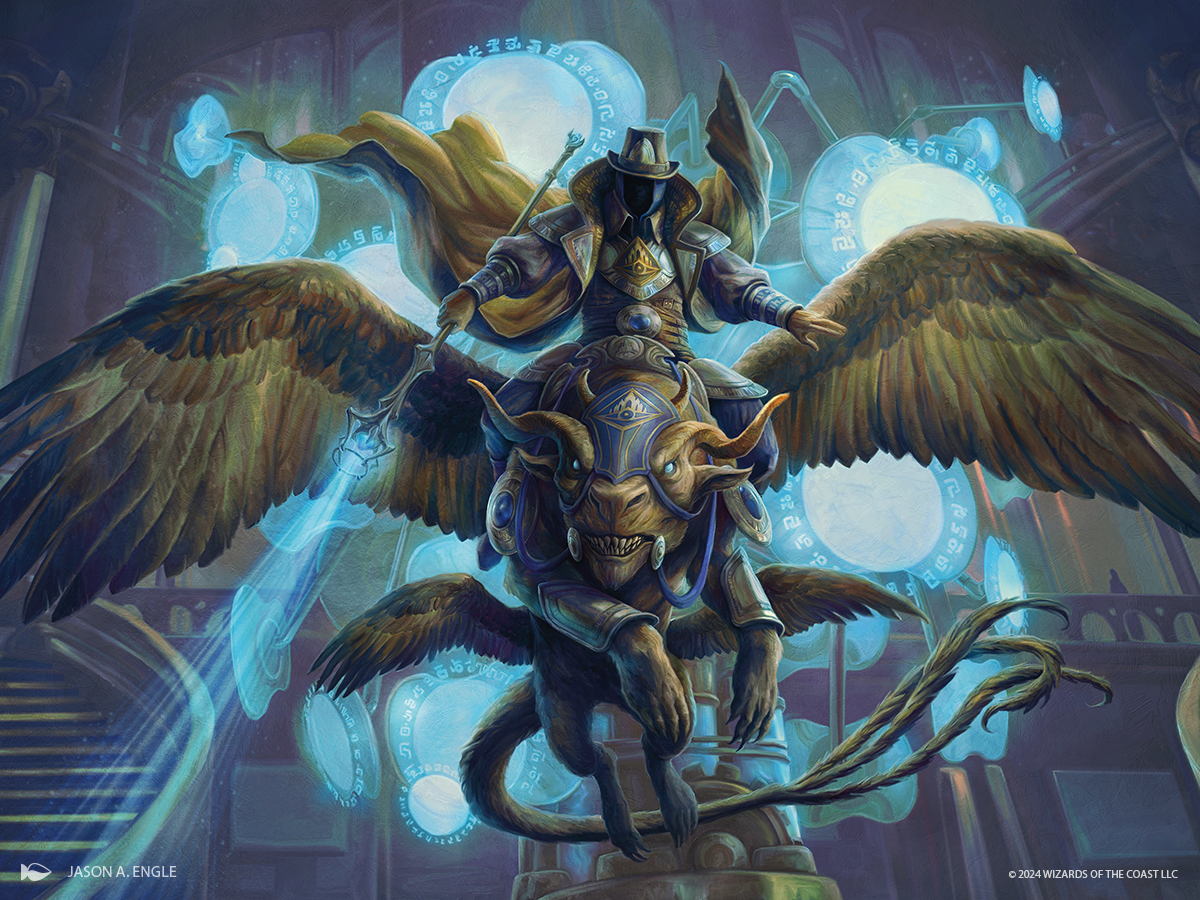
Centuries ago, Ezrim was aligned with the Azorius, but he soon found the endless paperwork of the Senate tedious. He also considered many of his fellow archons insufferably smug, too complacent with the trappings of bureaucracy. Eventually he chose to break away from the Azorius, taking a few hand-picked followers with him to establish a new organization of truth-seekers.
Ezrim's truth-cult grew slowly. Members didn't actively recruit, and new acolytes joined only when Ezrim discovered someone he considered worthy of following his ideals. The truth-cult focused on refining investigative principles and assisting anyone in need. They charged only a minimal fee for their services to ensure they could provide aid to as many people as possible.
The truth-cult continued to grow until it was moderately sized. Then, in the aftermath of the invasion, it suddenly found itself overwhelmed with far more cases than its current members could handle. It began to rapidly bring in new members and expand into a more formal agency. Now, it employs detectives and many support staffers to aid in their investigations. The costs of their services have also increased as a necessity of supporting such a large organization. While at its heart, the R.A.M.I. retains the deep faith in Ezrim's principles, as it's grown, it has become more practicality minded and business-like in its approach.
The Agency Headquarters
The R.A.M.I.'s headquarters is a grand, hovering edifice that resembles a giant, floating, all-seeing eye. Artificial waterfalls pour from the bottom of the structure and blanket the ground beneath in a perpetual mist to suggest the R.A.M.I.'s role in rising above the fog of mysteries and uncovering the truth. There's no way to reach it from the ground: visitors must either fly up themselves or make use of an Agency-provided griffin mount.

The headquarters occupies a prime location in Tenth District Plaza, which has historically been neutral territory for the guilds. By choosing to locate their headquarters there, the R.A.M.I. is making a conspicuous statement of their independence—in theory, anyways. In practice, guilds account for the vast majority of R.A.M.I. cases, and guild members are frequently seconded to the R.A.M.I. in a variety of roles.
Inside, the HQ is built along expansive lines to accommodate Ezrim's size. Upon entering, visitors find themselves in a large central atrium, which then branches off into a honeycomb of offices, laboratories, and archives. Ezrim's office is located on the top floor.

The R.A.M.I.'s case archive is a comprehensive catalogue of all completed and inactive cases they've ever worked on. The oldest records are often little more than a series of notes scribbled on scrap paper that date from the earliest days of the R.A.M.I. as a truth-cult. The archives are in the heart of the headquarters. Corridors leading to the archives are magically warded to be completely undetectable to anyone not wearing a R.A.M.I. badge.
All samples, evidence, and other physical material from ongoing cases are stored in evidence lockers, which are the most fiercely guarded and heavily restricted rooms in the building. Multiple measures are put in place to prevent tampering with the evidence. Investigators are forbidden from ever directly adding or removing objects from evidence lockers. Only evidence custodians can access the lockers, and each evidence capsule holds a magical record of everyone who's ever encountered it.
Necropsy chambers are where postmortem examinations are performed to discover causes of death or any other unusual circumstances on a body. Many of the R.A.M.I.'s necrotopsists are former Simic or Golgari members.
Collaboration with the Guilds
More than any other agency, the R.A.M.I. walks the fine line between autonomy from and collaboration with the guilds. The bulk of their casework comes from the guilds themselves, and it's become a common practice for guild members to be seconded to the R.A.M.I. to assist with investigations.
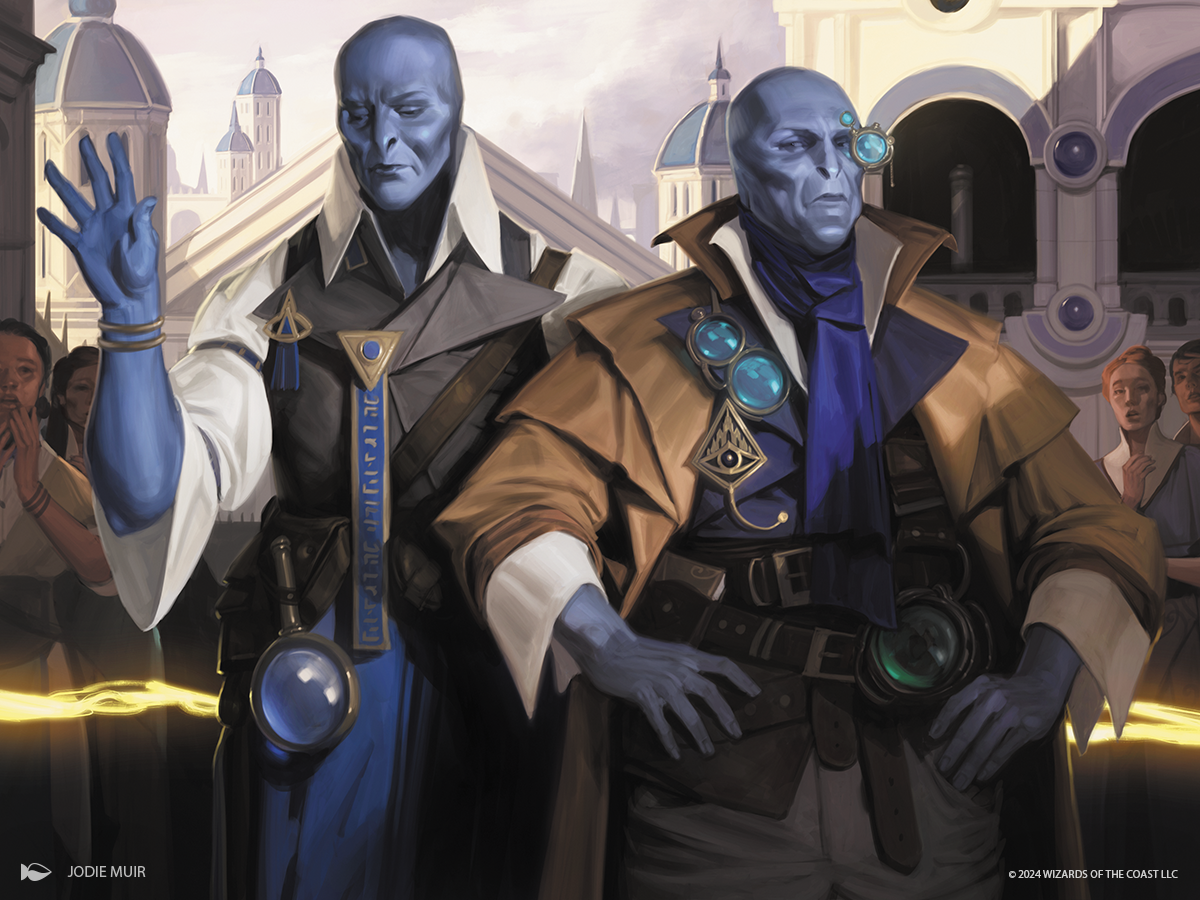
However, Ezrim insists on maintaining his Agency's autonomy and will sometimes refuse to take on cases if he thinks they're handling too much guild-related work.
Hierarchy, Division, and Roles
At the top of the hierarchy is Ezrim himself. Below him, the Agency is structured into two main divisions: investigations and support.
Investigations is structured into ten subdivisions, each responsible for overseeing and managing cases within one of Ravnica's ten districts. Investigations tends to fall into one of the following categories:
- Homicide: Investigations into illegal, non-guild-approved murders and mysterious deaths. Homicide investigations are almost always joint efforts with a guild. The default guild is typically either the Azorius or the Boros, but depending on which guild's territory the death occurred in, other guilds often get involved.
- Criminal investigations: Non-homicide cases that involve breaking Ravnican law.
- Guild investigations: Non-criminal, guild-related cases. These are almost always direct requests from the involved guild and involve heavy collaboration between the R.A.M.I. and the guilds.
- Civil investigations: All other non-criminal, guildless cases.
The support division includes all other roles that assist the detectives in their investigations. There are three different support units:
- Investigative analysis: The largest unit within the support division. This unit covers evidence analysis, necropsy, and forensics. Necrotopsists, forensic mages, and chirurgeons make up the bulk of the staff.
- Archives: Archivists are responsible for maintaining the case files library, while evidence custodians maintain the evidence lockers.
- General support: Responsible for all other functions that keep the R.A.M.I. running smoothly, such as guild liaising and equipment maintenance.
Other Detective Agencies
Though the R.A.M.I. is the largest and most well-known detective agency on Ravnica, many smaller agencies and independent freelancers do steady business as well. Most of their work comes from private citizens rather than the guilds and tends to consist of civilian matters, such as tracking down missing objects or gathering evidence on deceitful business partners. These agencies have fewer resources than the R.A.M.I. but have managed to carve out their own niches by being less expensive than the R.A.M.I. or less bogged down by paperwork and formalities.
Despite the unspoken understanding between detectives and the guilds, it's not uncommon for smaller agencies to continue investigating, withhold information, or even deliberately misleading a guild in order to keep a case for themselves.
Haazda Investigations
Haazda Investigations operates largely in the peripheral and "country" areas outside the major urban clusters. They are an offshoot of the Haazda, the volunteer corps of law enforcement that covers areas where the Boros have no jurisdiction. Rougher and less disciplined than R.A.M.I., they are more likely to resort to rough, aggressive methods to get the job done.
The Unguilded Eye
The Unguilded Eye is a loose collective of independent freelancers bound together by necessity and professional respect rather than formal agreements or any sort of camaraderie. Though these detectives largely work alone, they will share resources and information as needed throughout their network.
Amateur Sleuths
Not everyone who investigates mysteries does so professionally. Sometimes, all it takes is a keen eye and determination—or simply being in the right place at the right time to notice something amiss.
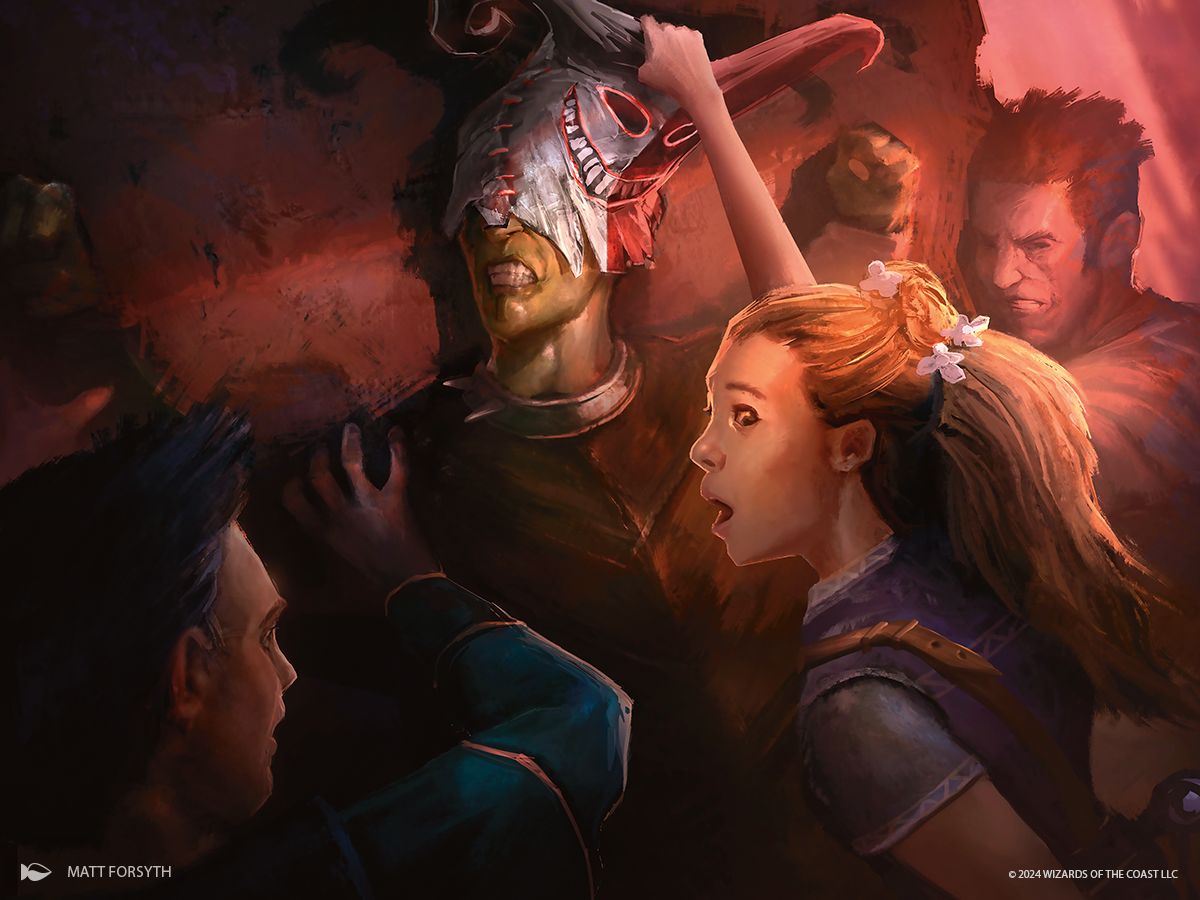
These amateur sleuths can be anyone, from feisty reporters to retired grandparents simply keeping an eye out on the neighborhood. They tend to utilize personal connections, local knowledge, and makeshift gear rather than specialized tools or formal investigative methods.
Tools of the Trade: Investigative Gear and Forensic Magic
The growth of the detective industry has spawned a niche industry of investigative gear. These range from upgrades on existing objects to brand-new tools designed specifically for the profession.
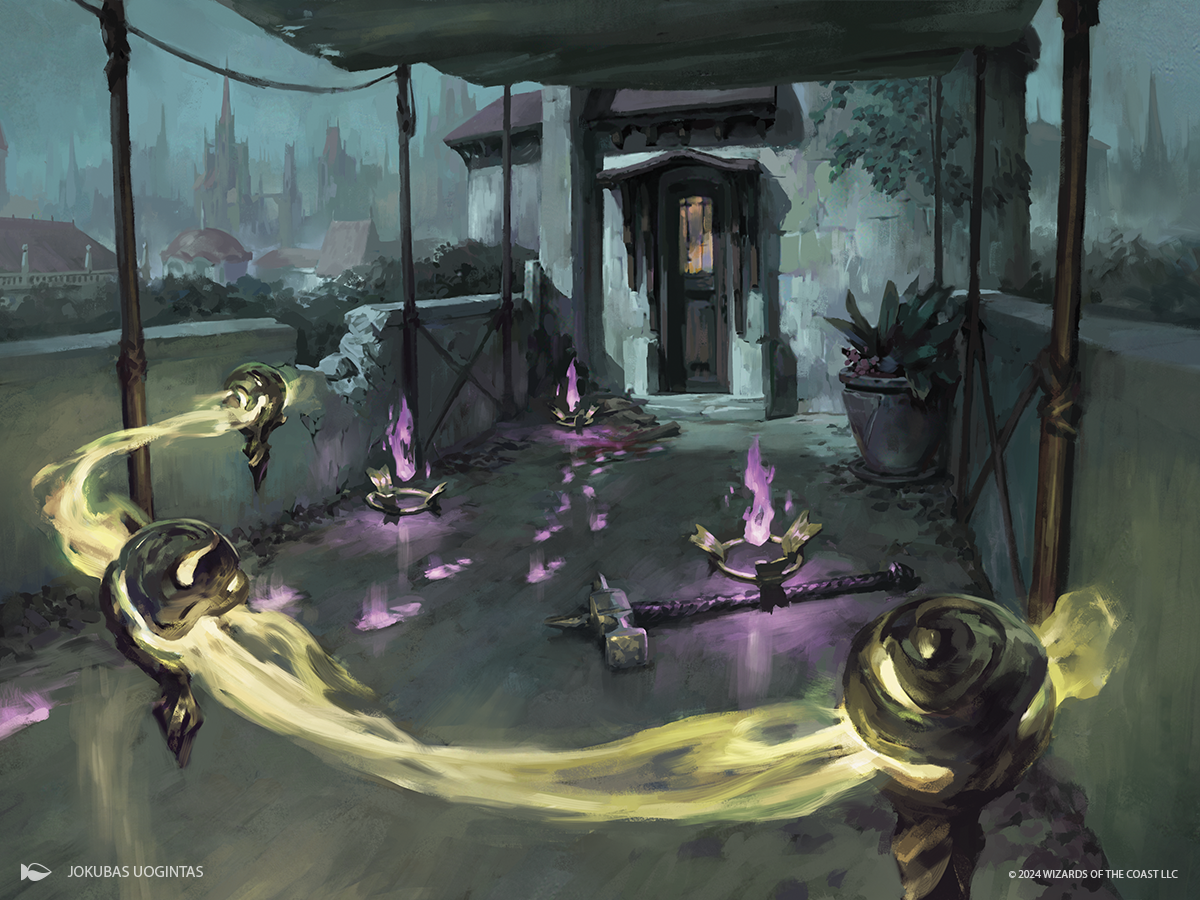
Here are some examples of newly invented investigative gear:
- Toolkit bracers that incorporate a variety of tools and lenses for detailed fieldwork
- Evidence tags for highlighting evidence at a scene and preventing on-site tampering
- Spectral lenses spelled to read magical residue
- Darklamps tuned to specific dusting powers that glow when the light is shone upon them
- Magically sealed evidence capsules that hold objects in stasis and prevent contamination
- Barrier wards that are used to seal off scenes of investigation and keep bystanders from wandering in
Forensic magic is broadly defined as all magics used during a detective's investigation. Some of these techniques are repurposed guild magics, while others are more recently invented. Some agencies have developed propriety techniques and magics, which they fiercely guard as trade secrets.
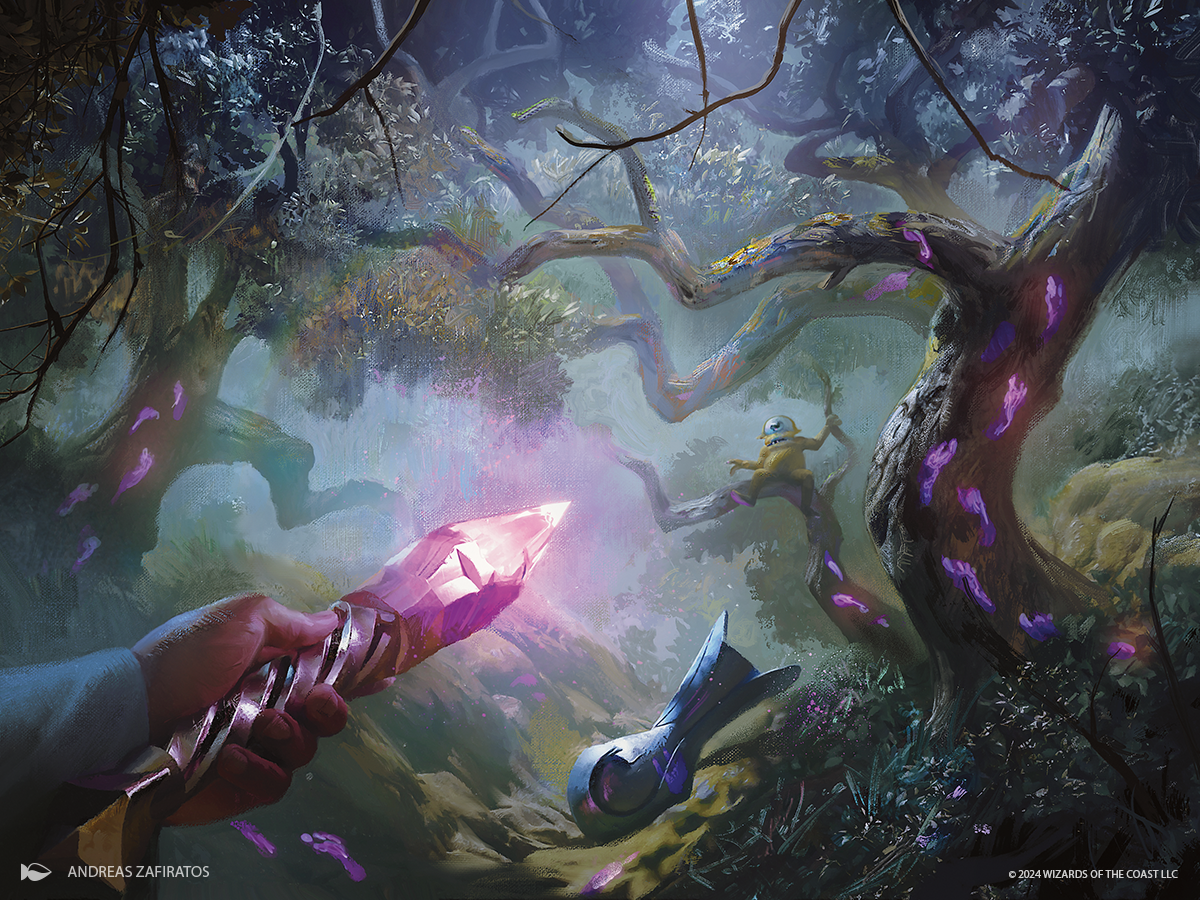
The R.A.M.I. doesn't have any proprietary techniques or magics but enjoys a boost in the efficacy of the magical techniques they use to investigate thanks to Ezrim's influence.
We hope you enjoyed this closer look at a post-invasion Ravnica as captured through the lore and art of the latest set! To preorder Murders at Karlov Manor booster displays, Commander decks, and more, check your local game store, online retailers like Amazon, and elsewhere Magic products are sold.
